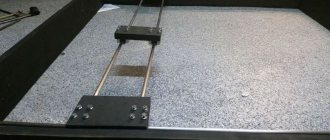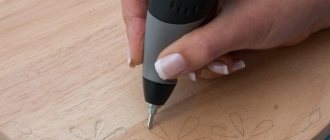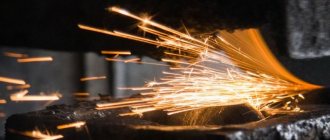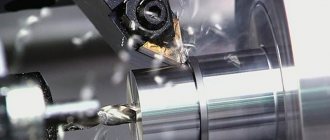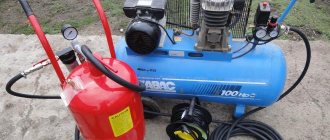Engraving and laser cutting today is a profitable niche for making money, where anyone with a certain amount of capital can make good money.
But the main question that future businessmen ask is what is the cost of developing this market. Currently, there are more than three dozen well-known brands of laser engravers on the world market.
Having a common device, many of them differ radically in their functionality and factory equipment.
When choosing the necessary equipment, try to clearly define for yourself the purpose of its use.
The next factor that you need to consider is which points you should pay more attention to when drawing up an estimate so that you don’t forget anything.
The purchased equipment must be connected and configured, creating optimal working conditions, while not forgetting about safety precautions.
CO2 laser cutter working principle
Paying attention to the general parameters of the laser engraver
, you may notice that the hardware of the device is not the same everywhere.
In practice, differences in the main parts affect the service life and reliability of the device as a whole. When using the equipment, this factor plays an important role, and depending on how much the design details are changed, the model range also varies, making the purchasing decision more difficult.
The main parameters when purchasing are primarily reliability, price and power level.
The first two points depend on the manufacturer of the laser engraver, and the more reliable the equipment, the higher they are. The power of the engraver should be given special attention. It can vary from 20–130 W (sometimes higher). Therefore, when choosing, you need to think about all the positive and negative aspects of the engraver.
If you plan to use equipment for cutting and engraving objects of medium thickness, then a laser engraver with a power of 40 W will be enough.
Areas of use
Laser engravers are a universal tool for working with any product. With their help you can:
- decorate souvenirs
(pens, notebooks, figurines, keychains, organizers, toys) from any materials, including wood, ceramics, glass, stone, metal, plastic, cardboard; leather, rubber, fabric.
- make memorial inscriptions
on wristwatches, jewelry (wedding rings, bracelets, pendants), leather goods (belts, wallets, business card holders, wardrobe items, etc.) and even on gadgets;
Laptop with laser engraving on the lid
- apply any patterns and designs to wood
(numbers, tags) metal (tokens, coins, medallions), leather (bags, shoes, ;
- create decor
for home and office;
- engrave cups, medals, plates
;
- produce outdoor advertising
brand, make branded and gift packaging; booklets, business cards, calendars.
- leave engravings on monuments.
You can make a good business using engravers, which is why they have recently been increasingly purchased for work in various workshops, design studios, and small-scale production. The creation of unique items based on individual design is becoming an increasingly popular service.
Interior item with laser engraving on glass
To surprise and attract clients, small business owners need to have something exclusive that sets them apart from their competitors. Laser engravers can help with this, because their functionality is very wide and the number of useful options is not limited to just applying inscriptions and drawings. They can be used for cutting, cutting, grinding, drilling, etc.
Depending on the technical characteristics, these devices are used both for personal use or for use in small companies, as well as in industry. Which one is right for you? Read more about this.
Laser engraver working principle
If the equipment power is 40 W, then the emitter tube has the same power.
You can upgrade your laser equipment by installing a different power emitter.
If the difference is smaller, you will have guaranteed losses in cutting quality, and if you install a more powerful tube than the base one, it will be a waste of time and money.
When choosing, it is also necessary to rely on differences in cooling systems and optics.
What's the secret?
The need to focus at a certain point to increase the depth of cut is a very important parameter for using laser radiation.
The ability of a laser engraver to process denser materials depends not only on its characteristics, but also on the focus of the laser beam.
By focusing the laser beam, you can concentrate the radiation power at a specific point. The optical lens is responsible for this, on which the thickness of the material being processed also depends . With its help, the laser beam is concentrated and the larger the focal length and maximum power, the thicker the material you can work with.
With an average power of 120 W and a lens with a focal length of 120 mm, you will be able to work with materials thicker than 20 mm. Reflective mirrors serve to refract and adjust the beam and have two modifications: deflecting and stationary.
The difference between these two systems is in performance; the stationary system is 7 times inferior.
When using a stationary mirror arrangement system, the engraving speed will be 1000 mm/s, and when using a deflecting mirror system, the material processing speed will increase to 7000 mm/s.
But still, you shouldn’t compare them in this way. Each system serves its own purpose.
Let's talk about cooling
An important difference between laser engravers and each other is their cooling system. It is divided into types:
- Air cooling consists of a series of fans that turn on simultaneously with the engraver.
- Water cooling is a closed system, the tubes and water jacket pass under the main components. A continuously running pump moves radiator-cooled water (distilled water is used) through a system of “vessels”. Often used in industrial machines.
Equipment design
For home use or small-scale industrial purposes, a desktop version of a laser engraving machine is sufficient. It is characterized by its compact size, low power and ease of use.
The basic structure of such an apparatus is as follows:
- laser - an element that induces a beam;
- optical system (resonator);
- carriage holding the laser;
- metal-plastic frame with carriage movement guides;
- cooling system;
- engine;
- table;
- housing with protective coatings;
- communication system connecting to power supply and control computer.
Industrial miniature laser engraver models come with a disk containing a computer program that controls its operation and processes images for transfer to the device.
Powerful laser engraving machine equipment used on an industrial scale is equipped by manufacturers with an electronic control system and the ability to program it. This is just an addition that optimizes the engraver's performance. The laser remains an important component.
Based on the nature and aggregate state of the active medium, lasers used in engravers are divided into:
- gas;
- solid state
Gas is a tube filled with an inert substance (nitrogen, helium, carbon dioxide). Its peculiarity is that the power decreases over time due to rarefaction of the gas, affecting the quality of the product. Therefore, it is characterized by operating time expressed in hours. It can range from 1.5 to 10 thousand. The higher the value, the longer the tube will last, subject to rational operation: with breaks and proper cooling.
Solid-state, where the active medium is a solid substance, are characterized by high practicality and stable power. They have specific functions: they add color to the cut track and perform the design with high precision. Solid-state elements are contained in metal laser engraving machines.
The properties of the cutting beam depend on the optical system that focuses it. It consists of three mirrors and a lens - curved glass covered with a special film. The engraver's accuracy is adjusted using these mirrors.
The mechanical part of the equipment consists of a metal-plastic structure in the form of a frame, with guide rails along which the carriage holding the laser moves. Some models have the ability to manually control the position of the carriage, which allows you to move it to the desired point throughout the working field.
The cooling system plays an important role in the stability of the device and the wear resistance of laser tubes, which can be:
- air from several fans;
- water, which is a closed circuit of tubes with water circulating through them;
- combined - air-water.
Overheating of the laser element will lead to a decrease in its power, and the engine will lead to failure of the entire machine.
The power of the motor that controls the engraving laser, both metal and other dense materials, is important. This parameter determines what material the machine can handle, how thick it is, and what exactly it will do - engrave or cut a contour.
By power, engravers are:
- weak – 20-60 W – for working on wood, cardboard, plexiglass;
- medium power – 60-100 W – can process metal surfaces;
- powerful - 100-160 W - industrial, capable of cutting material.
The working field is a table, the height of which determines the ability to process materials of various thicknesses, since one of the main parameters is the distance from the laser to the surface. The field size is expressed in millimeters and indicates the possible volumes of products.
The automatic engraver has appropriate table height control and can be equipped with an additional rotating element for cutting rounded products. In simpler models, the position of the platform is adjusted manually, complicating the work as a whole.
The devices are connected to a 220 V power supply; mini models can be 12 V and are equipped with power supplies. Communication with the computer is carried out via a USB port.
Investment calculation
After familiarizing yourself with the functions and differences of the main models of laser engravers
, it is worth calculating the amount required to open this direction.
In this case, you need to “estimate” not only based on the funds for purchasing the machine, but also the cost of its maintenance and consumables.
The laser engraver kit does not always include the equipment you need. Often it has to be supplemented depending on the work being performed.
For example: for engraving and cutting dense materials, you need a standard table. But for processing thinner items such as fabric and leather, a honeycomb table is needed.
Purpose and features of laser engraving
Laser engraving differs significantly from other surface treatment methods. For example, a CNC machine mechanically removes some material using a cutter, leaving behind chips. This method has its drawbacks: sometimes the product may need to be reworked or polished, and waste must also be removed.
Laser engravers work differently: they evaporate the material layer by layer using a beam, leaving behind a perfect, very thin seam. The process occurs very quickly and almost silently, which is also an undeniable advantage compared to the mechanical application option. All this allows laser engravers to work not only with workpieces or traditional materials, but even with all kinds of gadgets - tablets, laptops, smartphones.
Laser engraver
The main purpose of engravers is the processing of solid materials. In addition to applying drawings and inscriptions, using this equipment you can also carry out milling, cutting, grinding and drilling, you just need to change the nozzle.
Laser cutting example
Exhaust systems as standard are made according to the “snail” principle, which ensures the extraction of associated fumes from the working area.
A coal hood will allow you to eliminate odor in the work area.
Using a powerful compressor will help you prevent overheating and contamination of the lens (protection from smoke and soot) and ignition of the material.
The quality of engraving and cutting also improves significantly in certain operating modes.
Engraving cylindrical materials (mugs, bottles) involves the use of a device for rotating them - a turner.
Halftone engraving program
Here lies another important nuance, namely the combination of laser + program + electronics (firmware) for halftones.
In order for you to be able to make halftones, the laser must have a PWM, the program must support the option of engraving from a raster (vector and gcode, by definition, cannot have halftones) and the board needs a connector for control. Many of the models we tested did not have one or the other, or both.
Here I would like to explain why vector or gcode cannot engrave with halftones.
The thing is that in a vector, or more precisely in the gcode format, the laser power is set once and usually does not change during the engraving process. In the raster format, dot engraving actually occurs, that is, each dot in the line is either white or black.
We have already described in detail about the conversion from raster to vector and how to make halftones on the page Laser engraving of halftones.
Thus, we talked about the main nuances when choosing a laser engraver or a separate laser itself.
If you have any questions, be sure to write! We will be happy to answer!
Caring for engraving equipment and tools
In order for an engraver or drill used at home or in a well-equipped workshop to last as long as possible, it is necessary to properly care for it. First of all, you need to monitor the condition of the tools that are used in conjunction with such equipment: there should be no cracks or other defects on their working surface. Defective instruments may only be replaced with burs of the same design and type. You should also make it a rule to clean the engraver's ventilation openings from dust accumulating in them after each working session.
Proper care of the engraver will not only keep such equipment in working condition for a long time, but also perform processing with its help as efficiently as possible.
Figure cutting of plywood (cutting out figures from a sheet of plywood using a machine) is popular among decorators and furniture makers. Using a sheet of plywood and special equipment, you can create not just a home decorating craft, but an entire work of art.
Read also: How to check a VAZ generator with a light bulb
Laser cutting of decorations for home decoration
Sawing methods (basic techniques)
You can cut out a figure using:
- machine for figured cutting of plywood – laser equipment;
- a regular jigsaw (you will also need a set of files for it);
- CNC – milling equipment.
Before you start sawing using one technology or another, you should know some nuances that need to be taken into account when working with glued veneer:
- You should know that cutting a figure from plywood made from pine/spruce will be much more difficult than from other wood species. This is explained by the fact that coniferous varieties have a viscous structure due to their resins.
- Glued veneer should be cut in the direction of the grain. If you need to make a cross cut, then first make small cuts with a knife, and then start sawing with the main tool.
- Before driving a nail, you need to make holes for it.
Sawing with a jigsaw
- You only need to cut in one vertical plane. The saw should be moved “up and down”.
- If you need to make a turn according to the drawing, then turn the workpiece, not the base.
- They begin to cut in the inner contour. Then they move to the outer contour.
- The nail file should be cooled periodically (pause work for 10-15 minutes). Otherwise, it will become unusable.
Note.
From ancient times to the present day, sawing with a jigsaw has been considered an interesting and creative activity.
Creating a masterpiece with a hand jigsaw
Laser cutting of plywood sheet
Operating principle: beam burning along the contour. The main advantages of this technique include:
- there is no need to process/file the edges of the figure after cutting;
- high-quality cutting;
- the size of all laser-processed parts is the same;
- You can burn a pattern of any complexity.
Disadvantages and possible risks when working with laser equipment include:
- with excess power, plywood may char (despite the fact that the technology provides a special air supply, there is a risk of fire/charring, albeit small);
- When a craftsman sees plywood, he must be able to determine what species the veneer is made of and what kind of glue it is glued with (the burning mode depends on the type of wood and the type of glue);
- If a novice works with such equipment, and during the burning process the beam “accidentally” (due to the operator’s inexperience) hits a knot, the product will be damaged.
Before you start cutting plywood with a laser, you need to learn how to work with this type of equipment. How the figure will look depends on experience.
A little about the main thing
Wood carving using this method takes place in several stages:
- First of all, you need to prepare a sketch for work. You can find it on the Internet and print it, or draw it yourself (if you have such skills).
- Transfer the finished sketch to the prepared surface. For convenience, it is best to use carbon paper.
- We process it in rough form.
- We trace along the contour.
- We paint the product.
- Apply varnish and wait until completely dry.
This is a standard technology for working with an engraver. Suitable for work of any complexity, and most importantly, it will be understandable even for a novice master.
Basically, the engraver is sold already in its complete set, but manufacturers have also created other additional devices that may be useful during work.
Basic tools required in addition to a hand engraver:
- The handle is ergonomic, required for comfortable work. Since the tool itself does not have such a device, which means the work will be difficult and inconvenient;
- Collets;
- The milling attachment is a similar part of a river router, only in this case it is small in size;
- Tripod - required for working with a flexible shaft;
- Angular attachment - reduces the angle of rotation by 90 degrees; in addition, its design is very rigid.
Speaking about the costs of this tool, if you purchase an exclusively flexible shaft and a tripod, the price will not be that high. If you buy all the equipment, then in this case the price issue increases significantly.
If you are a beginner in this craft, then it would be best to purchase a minimum set, which will have an average set without any excesses. This is necessary in order to understand in more detail which attachments will be used in all types of work.
There is no point in buying expensive equipment; sometimes an ordinary cheap Chinese set works even better than an expensive branded one.
In any case, the decision is yours when choosing an engraver.


